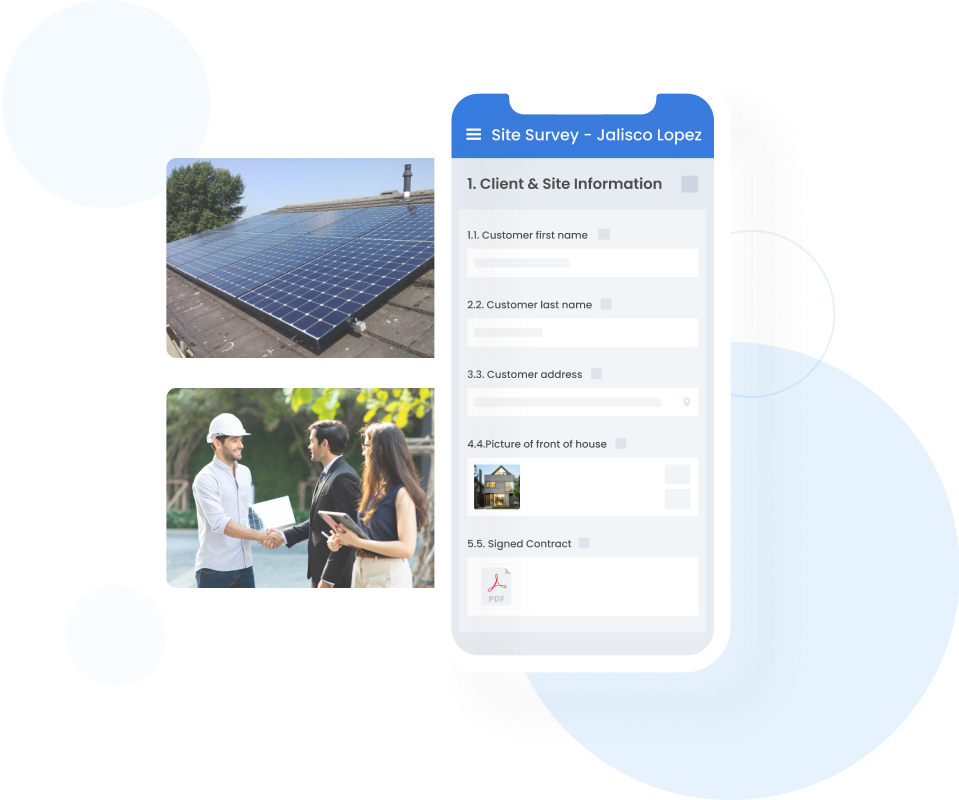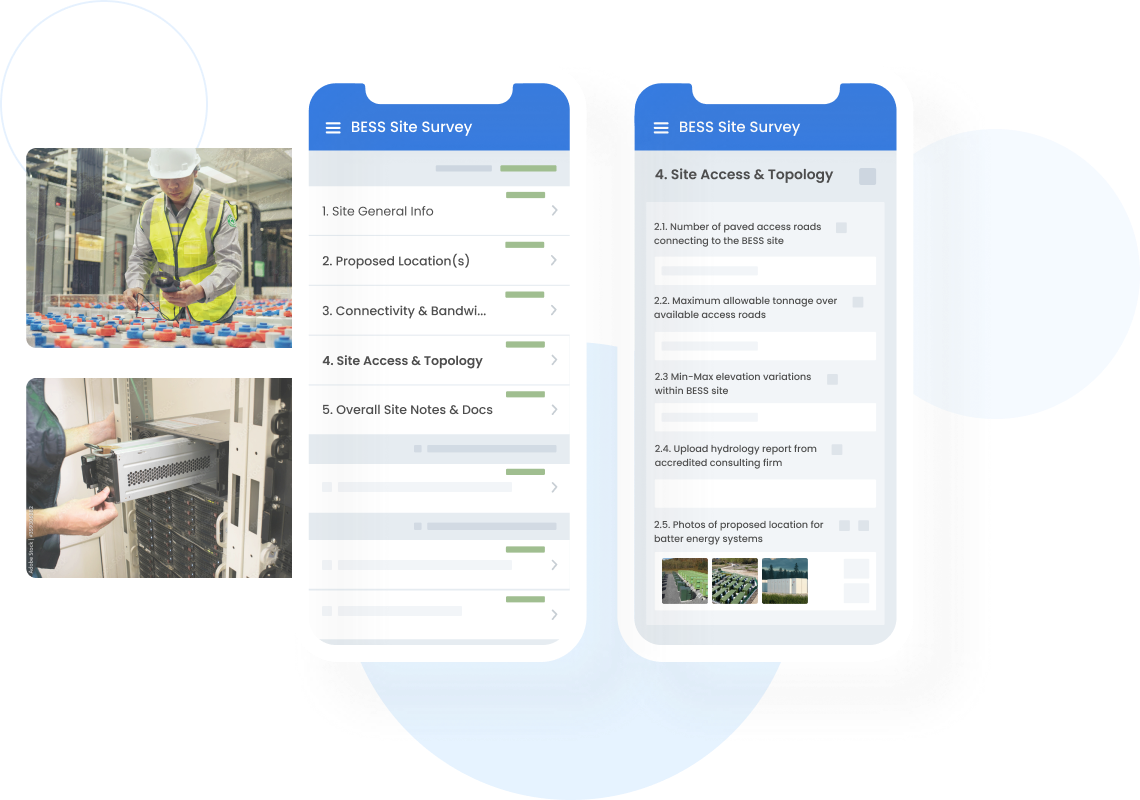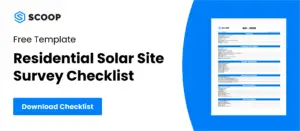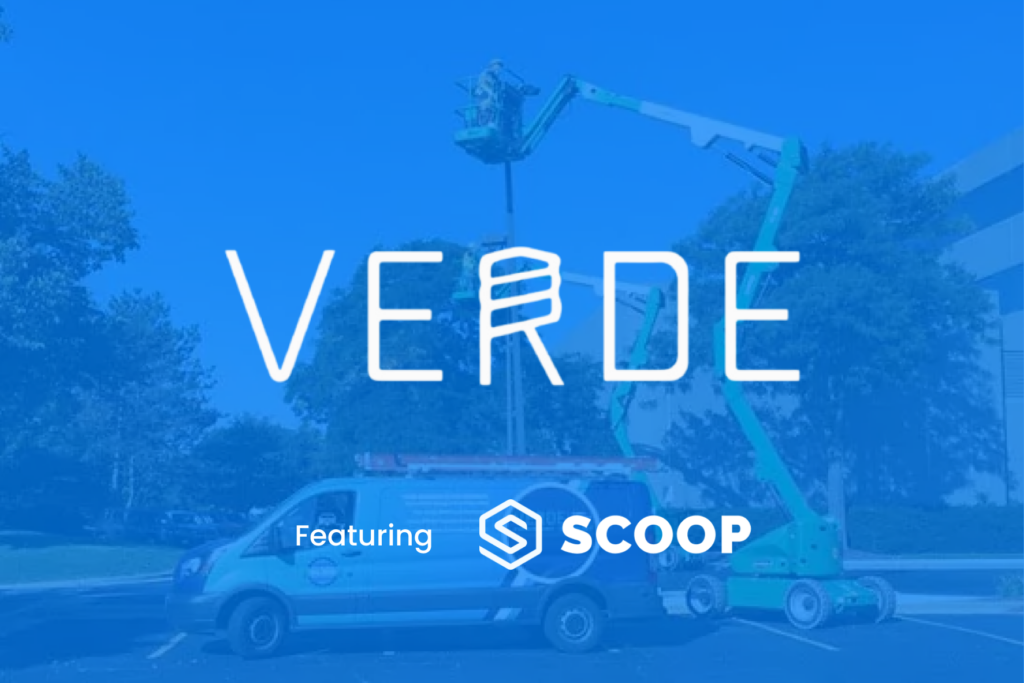Site surveys are the first step of any successful solar installation. Well, technically, the first step would be your sales team closing the deal, but let’s not get bogged down in details for now.
While site surveys are fairly straightforward, many installers struggle with standardizing this process, leading to project delays and repeat truck rolls, because valuable information was missed during the initial assessment. The good news is, with modern technology, you can now easily centralize this process by connecting your field and office teams through a solar site survey app that eliminates ambiguity through required data fields, measurements and photos while allowing your teams to collaborate in real-time.
Not a residential solar installer? No problem, we also made a commercial solar site survey checklist template!
What is a Solar Site Survey?
A solar site survey, which can either be completed in-person or via remote technologies, is a comprehensive assessment conducted to evaluate its suitability for a potential installation. These surveys are of vital importance as they allow solar installers to determine the feasibility and optimal design for a solar power system and hence generate an optimal design and proposal for the end client. The process involves assessing various factors, such as:
- Solar Exposure: Examining the amount of sunlight the site receives throughout the day and across seasons to gauge solar potential.
- Shade Analysis: Identifying any potential shading from nearby structures, trees, or other obstructions that could affect solar panel efficiency.
- Roof or Ground Space Evaluation: Assessing available space on rooftops or open ground for solar panel placement, considering factors like orientation, tilt, and roof type.
- Structural Assessment: Determining the structural integrity of the installation area to support the weight of solar panels and associated equipment.
- Electrical Infrastructure: Evaluating the existing electrical infrastructure to ensure compatibility with a solar energy system.
- Local Regulations: Checking local regulations and zoning requirements to ensure compliance with any restrictions or permits necessary for solar installations.
Residential vs. Commercial Solar Site Surveys
Residential site surveys are characterized by a more personalized touch. These surveys revolve around the unique needs of individual homeowners or small residential clusters. The inspection of structural elements centers on the home itself, particularly the roof’s condition and its ability to bear the weight of a solar panel system. The energy focus is customized, targeting the energy needs of individual households, which is often variable from one home to another.
Commercial surveys, however, scale up in complexity and scope. The scrutiny extends to larger structures, demanding an intricate evaluation of expansive roofs and potential structural modifications. The energy objectives are broad, seeking to fuel the extensive operations of commercial buildings, industries, or substantial residential developments. Regulatory processes are also more involved, and financial considerations take on a strategic nature, aligning with the sophisticated needs of commercial enterprises. These necessitate a more thorough site survey compared to residential projects.
In case you missed it at the top of our blog, we also have a residential site survey checklist template!
How to Conduct a Solar Site Survey
Solar site surveys involve a series of essential steps that contribute to the overall success of the project. The good news is that these steps can be easily standardized. The following tasks constitute the key components of a comprehensive residential solar site survey:
- Step 1 – Gather Basic Client Information: Begin by collecting essential contact details from the client to understand their specific requirements and preferences. Once you start survey, ensure all required information is collected.
- Step 2 – Evaluate the Condition of the Available Roof or Ground Space: Conduct a thorough examination of the site to assess its condition and suitability for solar panel installation.
- Step 3 – Take Measurements for the Design: Accurately measure relevant dimensions to facilitate the design process and ensure precise placement of solar panels, according to the plan.
- Step 4 – Perform a Shading Analysis: Evaluate the impact of shading on the solar panel installation area to optimize energy production.
- Step 5 – Assess the Attic and Structural Components: If the installation is done on a roof, inspect the attic space and structural components to ensure they can support the added load of solar panels.
- Step 6 – Inspect the Service Panel(s) and Electrical Systems: Examine the electrical infrastructure, including service panels and systems, to determine compatibility with the solar installation.
- Step 7 – Store and Document All Information: Systematically store and document all gathered information, including detailed site photos and using the standardized forms for surveys, for future reference and analysis.
While not enumerated as a distinct step, it is imperative to emphasize the importance of capturing as many photographs and videos as possible during the survey. These visuals serve as invaluable resources, offering a comprehensive understanding of the site conditions. Subsequently, they prove instrumental for the design and engineering teams working remotely, providing them with richer context and aiding in more informed decision-making for the solar project.
The Role of Site Survey in Compliance
Conducting solar site surveys is crucial for meeting local regulations and standards. These assessments meticulously evaluate the site to pinpoint and address requirements set by authorities, such as zoning laws, HOA guidelines, and permitting procedures.
Complying with these measures is vital to prevent legal complications, guarantee the correct installation of solar systems, and uphold the project’s credibility and success. The information gathered during the survey forms the basis for designing and executing solar installations in alignment with regulatory expectations, ensuring a smooth and compliant workflow.
How a Solar Site Survey App Can StreamlineProcesses and Ensure Compliance
The integration of cutting-edge technology, exemplified by tools like the Scoop Solar Mobile App, is fundamentally transforming the way site surveys are conducted, especially for the highly mobile workforce within the solar industry. Scoop’s innovative mobile app addresses the unique challenges faced by survey teams operating in the field who are rarely tethered to traditional office desks. The Solar Site Survey App, embedded within Scoop, emerges as a key component that not only standardizes the data collection process but also ensures that field technicians can efficiently gather and transmit vital survey data related to the property.
Accessible on both iOS and Android devices, the Scoop Solar Mobile App empowers site surveyors by providing the flexibility to capture crucial service and installation data on-the-go during the solar installation process. The app’s offline functionality and the ability to mark crucial fields as required contribute to substantial time savings and a notable reduction in repeat site visits.
The app’s cloud-based infrastructure enables real-time syncing, significantly improving collaboration between field teams and office staff. As site surveys are completed, field workers can quickly upload photos, videos, and data directly from the client’s location. This immediate transfer of information allows the management team in the office to review the collected data without delay, make well-informed decisions, and keep project timelines on track.
Beyond its immediate applications, Scoop’s emphasis on standardizing data collection and ensuring a consistent approach across different sites significantly contributes to increased compliance and smoother project execution. By enabling teams to capture data and pictures in a uniform manner, the technology ensures a cohesive and efficient workflow, ultimately leading to more successful and streamlined solar installations.

Empower Your Field Team Across the Board
For renewable companies seeking to improve communication and collaboration between field and office teams, Scoop’s Solar Work App Library allows you to implement best practices and digital, streamlined workflows beyond site surveys. Work Apps™ are easy to use and allow you to standardize data collection across teams with custom fields, required checklist items, photo uploads, workflow stages, access control rules, and more. Solar teams can create their own Work Apps and customize them based on specific requirements and workflows or use Scoop’s pre-built apps that have been built using best practices.
Below are a few examples of these existing Work Apps.

Residential Solar Job Closeout App
Solar companies can generate job closeout (JCO) reports up to five times faster with the solar job closeout app. Automated alerts remind installers of which photos are required before they leave the site and the mobile app makes it simple to upload these photos in real time. Once all data has been collected, solar teams can quickly generate professional job closeout PDF reports with the click of a button.
Residential Solar Installation QA App
The residential solar QA app enables field personnel to perform a comprehensive Quality Assurance (QA) or Quality Control (QC) check on a previously installed residential solar panel system, including paneling, mounting, and a balance of system components. Customized checklists ensure the correct data is collected for each part and dynamic filtering allows users to sort checklists by lead, project, and more.
Commercial Solar Preventative Maintenance App
When it comes to commercial solar projects, the preventative maintenance checklist app facilitates a straightforward solar site inspection and ensures that key data is collected and shared across project teams. Your field surveyor or other personnel can capture images, videos, barcodes, signatures, dates, times, and more directly within the cloud-based app. The data then syncs back to office teams in real-time who can view and sort service tickets by project, due date, stage, and more.
Safety Incident, Illness, and Injury Report App
It has become increasingly important to mobilize incident reporting, which is why solar teams should use the safety incident report app. This app provides users with a quick method of gathering the information required to complete a standard OSHA Form 301 – Injury and Illness Report. Within the incident report template app, employees can add details such as time, location, and description while they are still fresh in mind and even upload geo-validated photos and videos as required.
Visit our website for a full list of available Work Apps.
Closing Thoughts
In conclusion, improving solar site surveys is key for successful installations, and modern technology, like the Scoop Solar Mobile App, plays a vital role. This app allows field teams to easily track project details and collect data on-site, ensuring accuracy and reducing the need for return visits during the solar installation process. The Residential Solar Site Survey App within Scoop empowers technicians to gather essential information seamlessly. By embracing such technology, solar companies can streamline survey processes and ensure compliance with local regulations, contributing to the overall success of their projects.
If you’re facing challenges regarding solar site surveys and are looking to improve your operations as a whole, reach out to one of our passionate experts today!
Solar Site Survey FAQs
Why is a Shading Analysis so Important?
A shading analysis is a crucial step in finalizing the location of solar panels on a roof. A lack of sun and therefore any kind of shading is detrimental to the panels’ performance. For a rooftop project, site surveyors must understand how the sun casts light on the roof at all hours of the day.
Manual examination of shadow region is difficult as shadow patterns not only change throughout the day but also varies at different times of the year. Nevertheless, there are programmed tools available for locating panels which use coordinates as input and work with Google to get a detailed survey of the area including different objects which can create shadows.
What is the Difference Between Construction and Solar Site Surveys?
There are similarities to site surveying in both industries and the output is typically the same – a detailed study to assess the land area, collect measurements, and identify related information that may be required by your engineering team. The difference with a solar site survey, however, is the focus on the sun, roof, building, and any shading caused by nearby trees or buildings.




